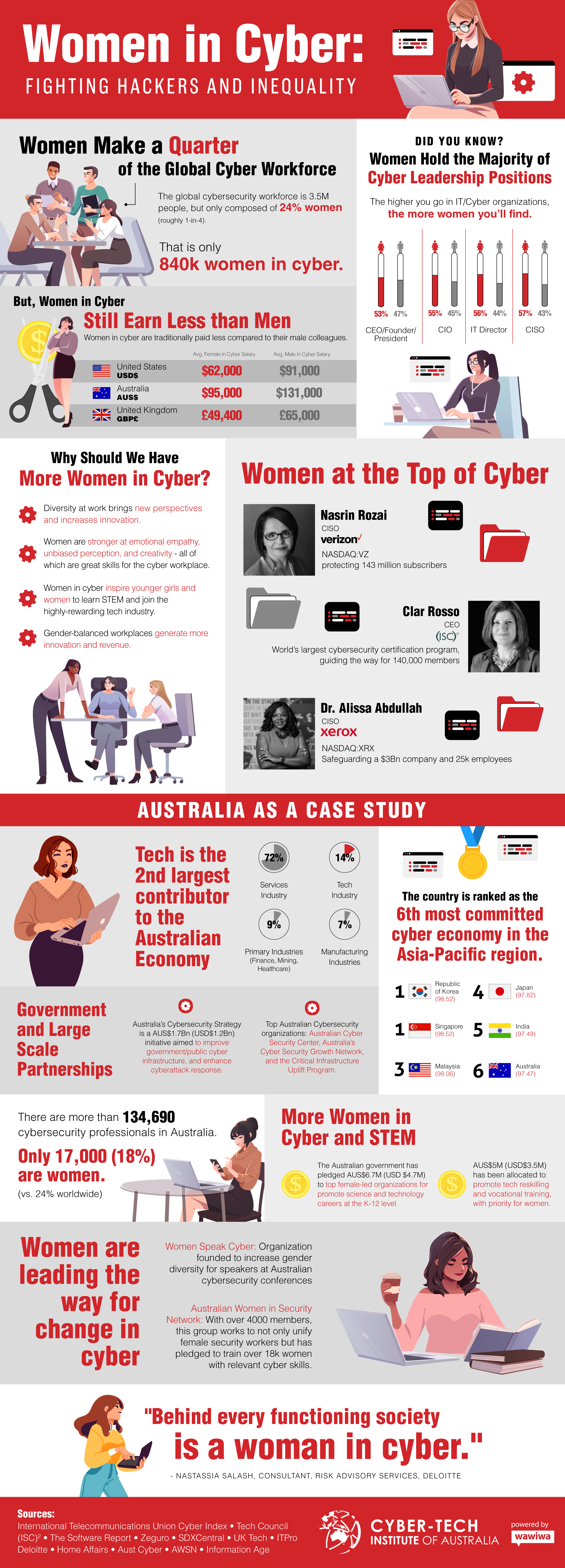Cybersecurity remains one of the most dynamic and exciting technology sectors. However, this sector needs a systemic change in women’s representation and compensation. In this infographic, we state the facts and explore the importance of increasing the presence of women in the cyber space!
In collaboration with our partner, Cyber-Tech Institute of Australia, we’ve analyzed the gender gap in the global cybersecurity sector, and, specifically, in Australia. This infographic breaks it down!

In the global cyberspace only 24% (nearly 1-in-4) of the workforce is female. In Australia women make up only 18% of cybersecurity professionals. In a country that is the 6th most committed cybersecurity sector in the Asia-Pacific, and where tech is the 2nd largest contributor to the country’s economy, fixing this imbalance should be a priority.
Women take lead in many C-suite and executive positions in cybersecurity. More women than men are in positions such as CEO (53%), CIO (55%), CISO (57%), and IT Director (56%). This is quite encouraging! However, women are still paid less than their male counterparts. The United States cyber sector has one of the largest differences in average salaries, with women earning US$29,000 less every year on average in comparison to their male equivalent.
There is still much work to ensure proper representation of women in the cybersecurity industry. In the meantime, we can celebrate the achievements of incredible women in the cyberspace. For example, Nasrin Rozai (CISO of Verizon), Clar Rosso (CEO of (ISC)2), and Dr. Alissa Abdullah (CISO of Xerox) are among the female trailblazers within cybersecurity.
Research shows that increasing the representation of women in tech and cyber roles increases revenue, enhances diversity, boosts innovation, and inspires young girls and women to consider careers in tech.
We hope that in the years to come cybersecurity will no longer be a “male-dominated profession,” but full of talented people of all genders and backgrounds.
As Natasha Salash, consultant of the Risk Advisory Services at Deloitte, best puts it, “behind every functioning society is a woman in cyber!”



